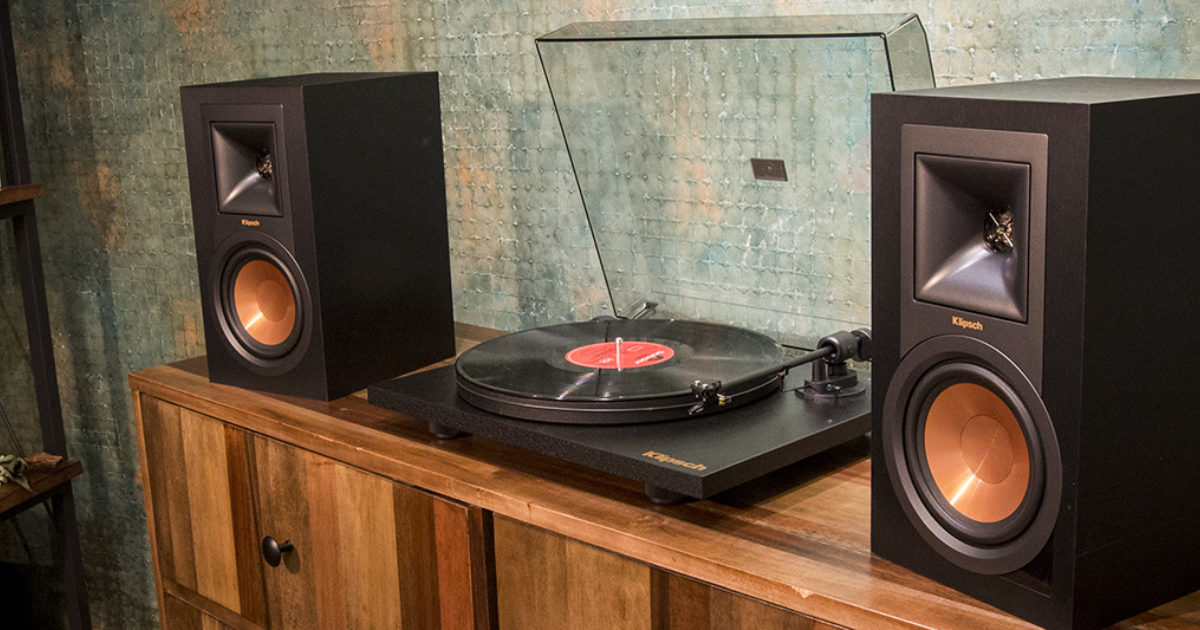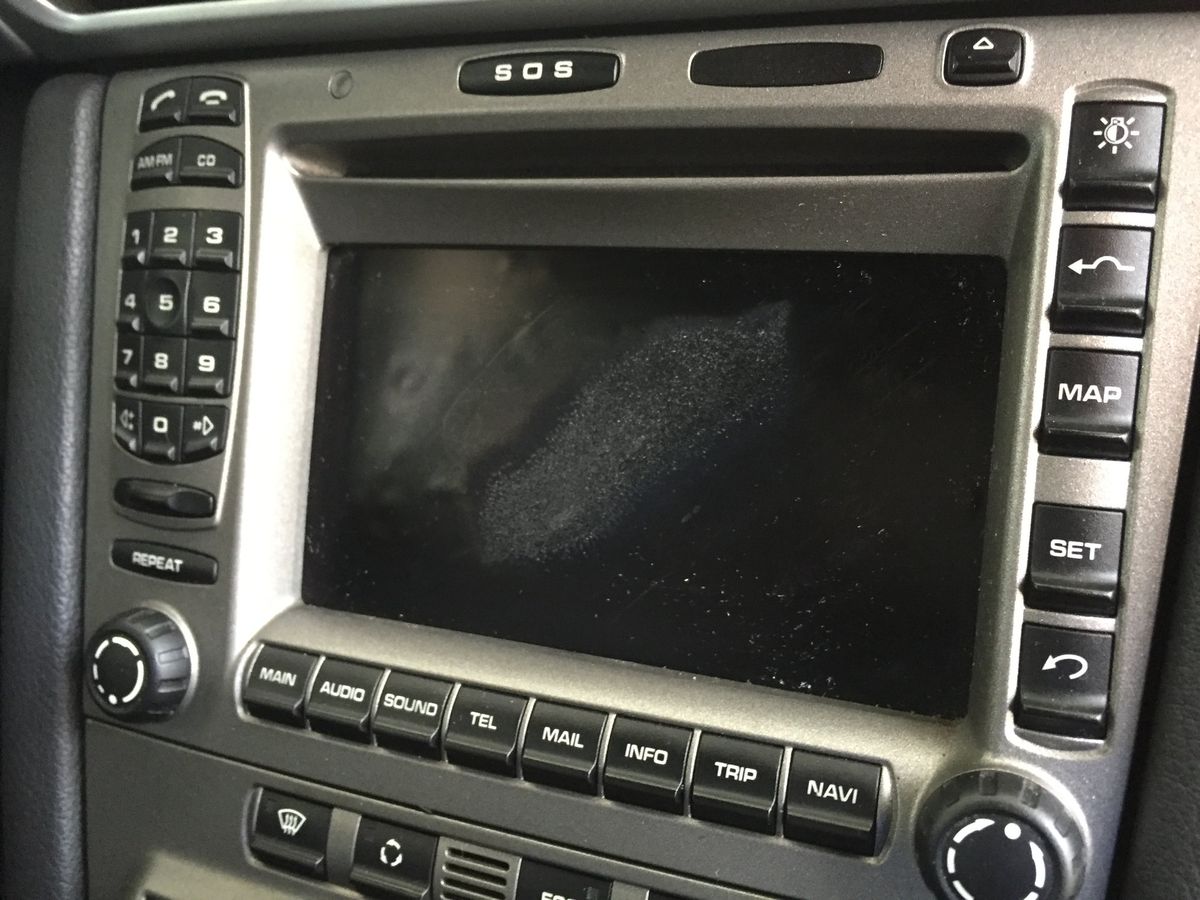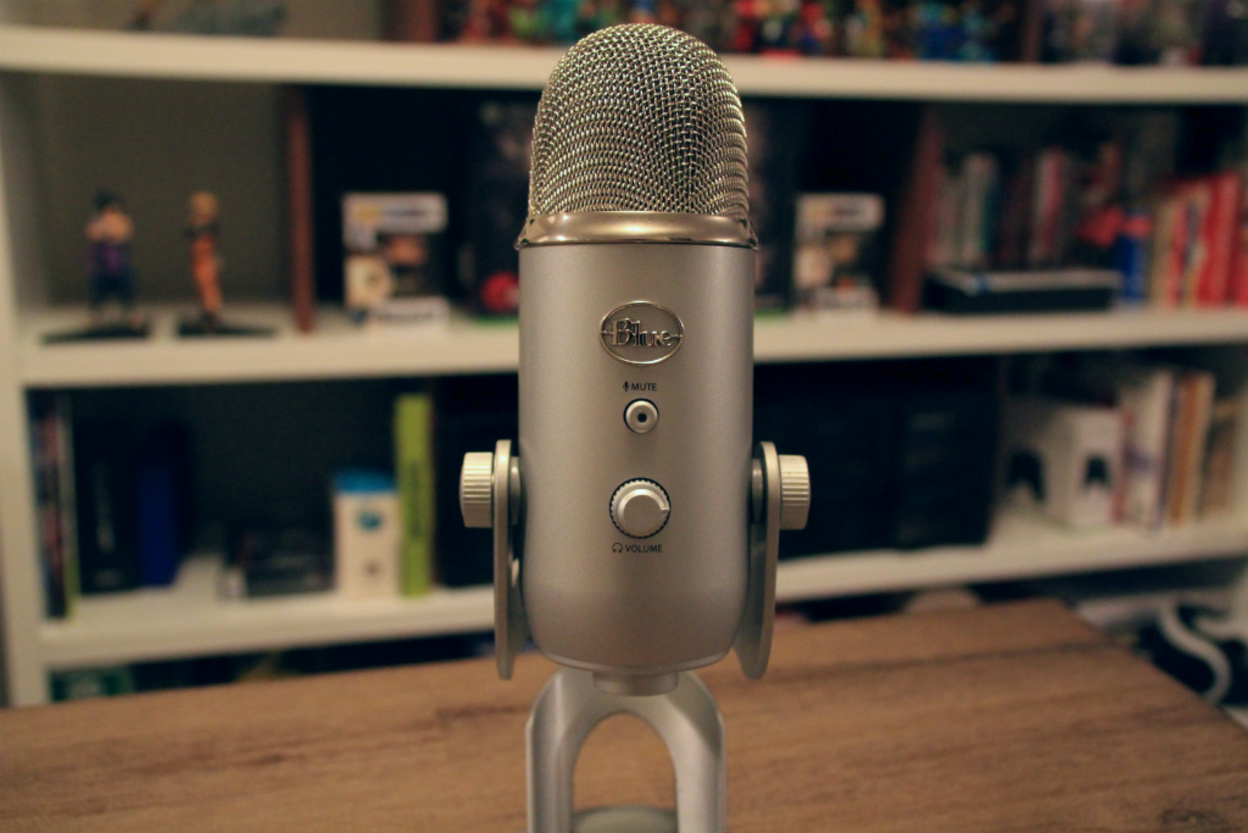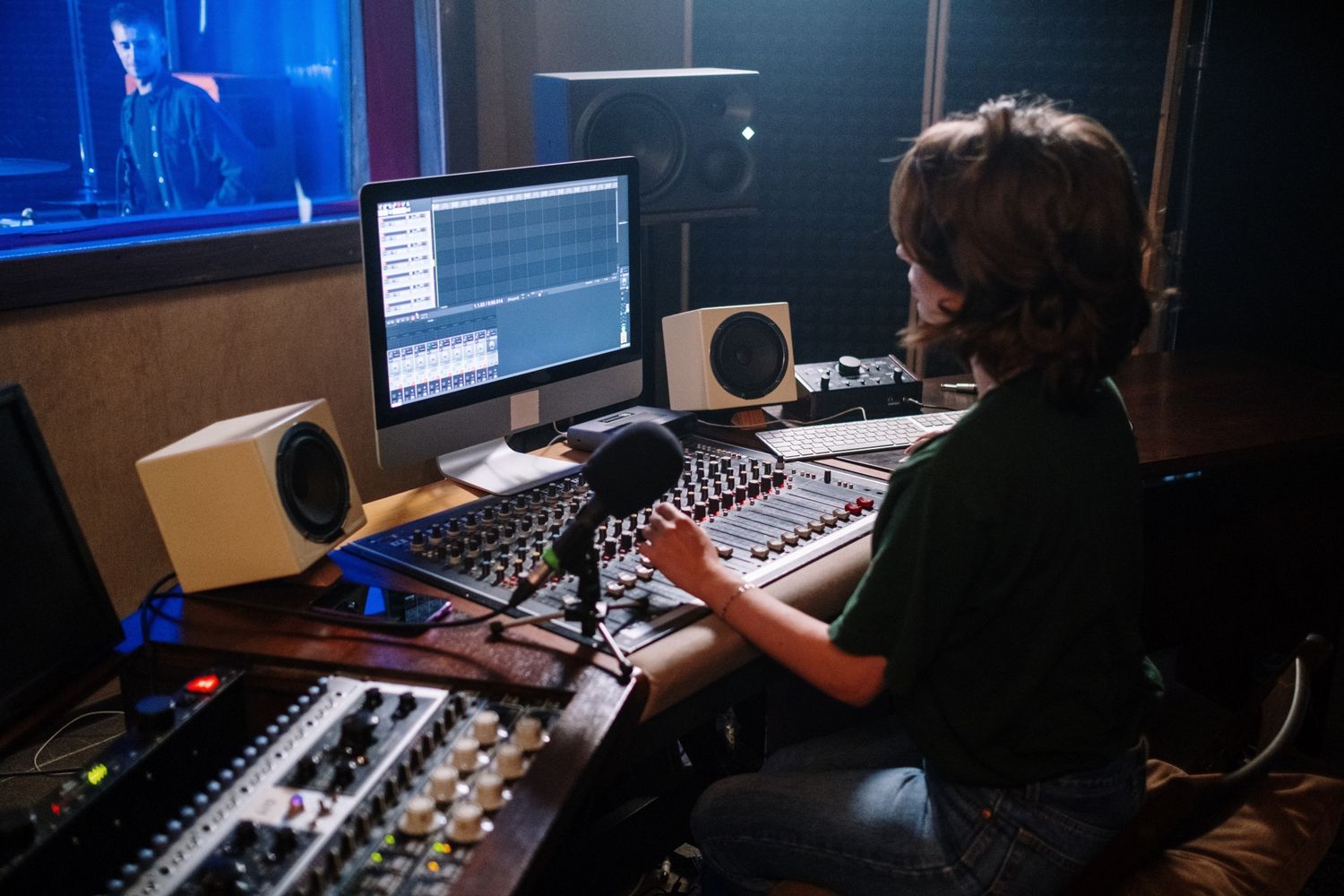Home>Production & Technology>Sound>How To Screen Record On Mac With Sound


Sound
How To Screen Record On Mac With Sound
Modified: January 22, 2024
Learn how to screen record on your Mac with sound. Capture high-quality videos with audio using the built-in screen recording feature on your Mac.
(Many of the links in this article redirect to a specific reviewed product. Your purchase of these products through affiliate links helps to generate commission for AudioLover.com, at no extra cost. Learn more)
Table of Contents
Introduction
Screen recording on Mac with sound is a useful tool that allows you to capture and share videos of your screen activities, presentations, tutorials, or gameplay. Whether you are a content creator, educator, or simply want to record a video call, having the ability to capture both visuals and audio can greatly enhance the quality and engagement of your recordings.
However, using the built-in screen recording feature on Mac does not automatically include sound. In order to record both the visuals and sound, you’ll need to follow a few additional steps and utilize third-party software that allows audio capture.
In this article, we will guide you through the process of screen recording on Mac with sound. We will cover the system requirements, choosing the right screen recording software, enabling microphone access, adjusting audio settings, setting up your recording area, starting and stopping the recording, and reviewing and editing the recording.
Whether you’re a beginner or an experienced Mac user, by the end of this article, you’ll have a comprehensive understanding of how to screen record on Mac with sound and be able to create professional and engaging videos.
Step 1: Check System Requirements
Before you start screen recording on your Mac with sound, it’s important to ensure that your system meets the necessary requirements for a smooth recording experience. Here are the system requirements that you should check:
- Operating System: Check if your Mac is running on macOS Mojave (10.14) or later versions. The built-in screen recording feature with sound is available on these operating systems.
- Hardware: Verify that your Mac has sufficient hardware capabilities to handle screen recording. Ideally, your Mac should have an Intel Core i5 processor or higher, at least 8GB of RAM, and enough free storage space for saving your recordings.
- Microphone: Ensure that your Mac has a built-in microphone or an external microphone connected. This is necessary for capturing the audio during screen recording.
By checking these system requirements, you can ensure that you have the necessary software and hardware components to proceed with screen recording on your Mac with sound. If your system meets these requirements, you can confidently move on to the next step.
Step 2: Choose a Screen Recording Software
While Mac provides a built-in screen recording feature, it does not include sound capture. To record your screen with sound, you will need to choose a third-party screen recording software that offers audio recording capabilities. There are several options available, and here are a few popular choices:
- ScreenFlow: ScreenFlow is a comprehensive screen recording and video editing software for Mac. It allows you to record your screen with high-quality audio, edit your recordings, add annotations, and export them in various formats.
- Camtasia: Camtasia is another powerful screen recording software that offers advanced audio recording features. It provides a user-friendly interface, editing tools, and options to add effects and transitions to your recordings.
- QuickTime Player: If you prefer a free and simple solution, you can use QuickTime Player, which is pre-installed on your Mac. While it may not have extensive editing capabilities, it allows you to record your screen with sound easily.
These are just a few examples, and there are many other screen recording software options available. When choosing the software, consider your specific needs, budget, and the features you require for your screen recording projects.
Once you have selected your preferred screen recording software, download and install it on your Mac. Make sure to follow the software’s installation instructions and set it up properly. Once installed, you can proceed to the next step and enable microphone access for audio recording.
Step 3: Enable Microphone Access
In order to record sound along with your screen on Mac, you need to grant microphone access to the screen recording software you’ve chosen. Enabling microphone access allows the software to capture audio from your Mac’s built-in microphone or any external microphone you have connected.
Here are the steps to enable microphone access:
- Click on the Apple menu in the top-left corner of your screen and select “System Preferences.”
- In the System Preferences window, click on “Security & Privacy.”
- Go to the “Privacy” tab.
- In the left sidebar, select “Microphone.”
- In the main window, you’ll see a list of applications that have requested microphone access. Check the box next to the screen recording software you’re using.
After enabling microphone access, your chosen screen recording software will be able to record audio along with your screen. If you’re using multiple screen recording software, make sure to grant microphone access to each one individually.
It’s important to note that you have full control over which applications can access your microphone. You can always revisit the “Security & Privacy” settings later to review or modify your preferences.
With microphone access enabled, you’re now ready to move on to the next step and adjust the audio settings to ensure high-quality sound capture during screen recording.
Step 4: Adjust Audio Settings
Before you start your screen recording on Mac with sound, it’s important to ensure that the audio settings are properly configured to capture clear and high-quality sound. Here’s how you can adjust the audio settings:
- Open the screen recording software you have installed on your Mac.
- Locate the audio settings or preferences within the software.
- Select the desired audio input source. This can be your built-in microphone or an external microphone if connected.
- Check the audio levels and adjust them if necessary. Make sure the levels are neither too low (resulting in inaudible sound) nor too high (resulting in distorted sound).
Additionally, some screen recording software provides options to customize audio settings further. You may have the ability to enhance audio quality, apply noise reduction, or adjust audio format settings such as sample rate or bitrate. Take advantage of these settings to optimize the sound capture for your specific recording needs.
It’s a good practice to do a quick test recording to check if the audio settings are accurately capturing the sound. Play back the test recording to ensure that the audio is clear and synchronized with the screen visuals.
By adjusting the audio settings correctly, you can ensure that your screen recordings on Mac with sound are of the highest quality and provide a seamless viewing experience for your audience.
Step 5: Set Up Your Recording Area
Before you start recording your screen on Mac with sound, it’s important to define the specific area of the screen that you want to capture. This ensures that your recording focuses on the relevant content and eliminates any unnecessary elements.
Most screen recording software allows you to customize your recording area. Here’s how you can set up your recording area:
- Open the screen recording software on your Mac.
- Look for the option to select the recording area. It may be represented by a screen icon or labeled as “Select Area” or “Capture Area.”
- Click on the option and drag your cursor to create a frame around the area you want to record. This can be a specific window, a portion of the screen, or the entire screen.
- Make sure to include any elements or windows that are necessary for your recording, such as a PowerPoint presentation or an application interface.
Additionally, some screen recording software offers options to lock the recording area or specify a fixed resolution. These features can be useful if you want to maintain a consistent recording size or prevent accidental changes to the recording area while recording.
Once you have set up your recording area, double-check to ensure that it encompasses all the relevant content you want to capture. If needed, make adjustments to the recording area by resizing or repositioning it before proceeding to the next step.
Now that you have defined your recording area, you are ready to start recording your screen on Mac with sound in the subsequent step.
Step 6: Start the Screen Recording
Now that you have set up your recording area and adjusted the audio settings, it’s time to start the screen recording on your Mac with sound. Follow these steps to begin the recording:
- Open the screen recording software you have installed on your Mac.
- Ensure that the recording area is selected and covers the desired content.
- Check that the audio input source is set correctly to capture sound from your built-in or external microphone.
- Click on the “Record” or “Start Recording” button within the software. Some software may also offer keyboard shortcuts to initiate the recording.
- Once the recording starts, you can proceed with demonstrating, presenting, or performing the actions you want to capture on your screen.
During the recording, remember to speak clearly and audibly if you intend to provide commentary or narration. Ensure that your microphone is positioned properly to capture your voice effectively.
As you record, keep an eye on the recording duration and file size if applicable. Large files can consume storage space quickly, so it’s important to stay mindful of the recording length and the available storage on your Mac.
Remember, you can pause or stop the recording at any time by clicking on the “Pause” or “Stop” button within the recording software or using the designated keyboard shortcuts.
Now that you have started your screen recording on Mac with sound, proceed to the next step to learn how to stop and save the recording.
Step 7: Stop and Save the Recording
Once you’ve completed your screen recording on Mac with sound, it’s time to stop the recording and save it for future use or editing. Follow these steps to stop and save your recording:
- Return to the screen recording software interface on your Mac.
- Locate the “Stop” or “Finish Recording” button within the software. Alternatively, you can use the designated keyboard shortcuts to stop the recording.
- Click on the “Stop” button or use the keyboard shortcut to end the recording. The software will prompt you to confirm the recording termination.
- Review the recorded video to ensure that the audio and visual elements are captured correctly without any issues.
- Before saving the recording, some software may offer editing options to trim or enhance the video. If needed, make any necessary edits or enhancements.
- Choose the desired file format and location for saving your recording. Common video formats include MP4, MOV, or AVI.
- Provide a descriptive name for your recording to easily identify it.
- Click on the “Save” or “Export” button to save the recording to your designated location on your Mac.
Once the recording is saved, you can access it anytime for further editing, sharing, or publishing. It’s a good practice to organize your recordings into folders or use a video management system to keep them easily accessible.
With the recording saved, you have successfully completed the process of screen recording on your Mac with sound. In the next step, we will briefly discuss reviewing and editing your recording for a polished final product.
Step 8: Review and Edit the Recording
After you have stopped and saved your screen recording on Mac with sound, it’s a good practice to review and edit the recording to ensure a polished and professional final product. Here are the steps to review and edit your recording:
- Open the screen recording software or a video editing software of your choice on your Mac.
- Import the saved recording into the software’s timeline or workspace.
- Review the recording playback to ensure that the audio and visuals are synchronized, and there are no technical issues or glitches.
- Trim any unwanted sections from the beginning or end of the recording to eliminate unnecessary content or mistakes.
- Use editing tools to enhance the video, such as adding annotations, text overlays, or transitions, to make it more visually engaging.
- Adjust the sound levels if necessary, ensuring that the audio is balanced, clear, and of good quality.
- If desired, incorporate additional audio elements, such as background music or voiceovers, to enhance the overall recording.
- Preview the edited recording to ensure that all changes are applied correctly and the final result meets your expectations.
- Export the edited recording in the desired video format for sharing, publishing, or further use.
Remember to save your edited recording separately from the original recording to avoid accidental overwriting. You may also consider creating backups of your edited recordings to ensure their safekeeping.
By reviewing and editing your screen recording, you can refine the content, improve its visual and audio quality, and make it more engaging for your audience.
With the completion of Step 8, you have successfully reviewed and edited your screen recording on Mac with sound. Now you have a polished recording that is ready to be shared, published, or incorporated into your projects.
Conclusion
Screen recording on Mac with sound is a valuable skill that allows you to capture and share your screen activities effectively. Whether you’re creating tutorials, presentations, or gameplay videos, being able to record both visuals and sound enhances the overall quality and engagement of your recordings.
In this article, we discussed the step-by-step process of screen recording on Mac with sound. We explored checking the system requirements, choosing the right screen recording software, enabling microphone access, adjusting audio settings, setting up the recording area, starting and stopping the recording, and reviewing and editing the recording.
By following these steps, you can confidently record your screen with sound and produce professional and captivating videos. Remember to choose a screen recording software that suits your needs, ensure microphone access is enabled, and adjust audio settings to capture clear sound.
Furthermore, setting up the recording area allows you to focus on relevant content, and pausing or stopping the recording at the appropriate time ensures you have the desired footage. Reviewing and editing the recording allows you to refine the content, enhance visual and audio quality, and create a polished final product.
Now that you have a comprehensive understanding of how to screen record on Mac with sound, you can unleash your creativity and share your knowledge, skills, and experiences through engaging and informative screen recordings.
Remember to experiment with different techniques, explore advanced features of your chosen screen recording software, and continuously improve your recording and editing skills to create even more compelling and professional videos.
So, go ahead and start recording – the possibilities are endless!











